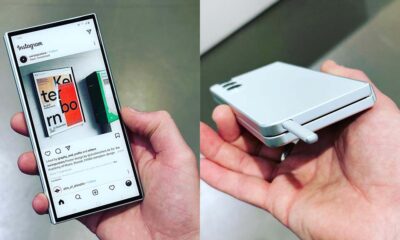News
South Korea to topple Taiwan in semiconductor race by 2032
US SIA (Semiconductor Industry Association) predicts South Korea’s semiconductor production will surpass Taiwan to rank second by 2032 globally. A new report titled “Emerging Resilience in the Semiconductor Supply Chain” reveals shocking data.
The report estimates that South Korea’s semiconductor production will increase by 129% by 2032. This is the 2nd highest growth rate after the US (203%), whereas Europe (124%), Taiwan (97%), Japan (86%), and China (86%) all expected to lag behind South Korea.
South Korea’s semiconductor production is expected to account for 19% of the global semiconductor market in 2032. It’s up 2% points from its 17% share in 2022, putting it behind China with 21% but ahead of Taiwan with 17% and the US with 14%.
![]()
In particular, the US production will likely grow its share from 10 percent to 14 percent due to increased investment, moving up to fifth place behind Japan with 15%. The US could see its share of the 10nm-and-below foundry market increase from 0% to 28%.
Meanwhile, Korea’s share in the semiconductors market may decline from 31 percent to 9 percent. This is attributed to the US efforts to rebuild its semiconductor infrastructure and attract dominant Foundry players to produce cutting-edge semiconductors locally.
At the same time, South Korea is expected to foster its share of the memory market, including DRAM and NAND flash, the report says. DRAM, particularly, could rise from 52% to 57%, while NAND flash is expected to rise from 30% to 42%.
Stay up-to-date on Samsung Galaxy, One UI & Tech Stuffs by following Sammy Fans on X/Twitter. You can also discover the latest news, polls, reviews, and new features for Samsung & Google Apps, Galaxy Phones, and the One UI/Android operating system.
Do you like this post? Kindly, let us know on X/Twitter: we love hearing your feedback! If you prefer using other social platforms besides X, follow/join us on Google News, Facebook, and Telegram.
News
3 best One UI 6.1.1/Galaxy AI photography features

Samsung’s One UI 6.1.1-based Galaxy AI features uplevel Galaxy photography. The latest Galaxy Z Flip and Fold phones bring Portrait Studio, Instant Slow-mo and Auto Zoom (Flip-exclusive) features to enhance the user experience.
The latest iteration of Galaxy AI is capable of detecting subjects with more precision, making skin tones appear more natural Even in darker indoor settings or low-light environments, photo quality is not compromised on the latest Galaxy phones.
With FlexCam’s Auto Zoom, Galaxy Z Flip phone users no longer need to worry about repetitively adjusting camera settings or stepping back just in time to strike a pose. FlexCam automatically detects the subject and zooms in or out for the best composition.

Portrait Studio is one of Galaxy AI’s innovative image editing features. Simply upload a photo from Samsung Galaxy, then click the pencil icon to discover a range of styles including comic, 3D character, watercolor, and sketch.

The Galaxy S24 series debuted the AI-powered Instant Slow-mo feature. This magical functionality allows users to experience special moments in slow motion. The upgraded version makes it possible to instantly save slowed video to Gallery or share it with loved ones.
Samsung will gradually release select new features to older devices. The S24 series as well as the Z Flip 5 and Z Fold 5 will get the update first. The company will likely distribute new features by the end of August to current Galaxy AI-compatible devices.
Later this year, the Korean tech giant will deliver major One UI upgrade. The upcoming One UI 7 will have more new Galaxy AI features for your devices. A user interface revamp is also in the company’s pipeline for Galaxy fans.
News
Galaxy A06 renders glimpse at Samsung’s 2025 design language

Samsung Galaxy A06 design revealed in leaked renders. The images demonstrate how the company’s upcoming smartphone could be designed. The A series would focus on Key Island and larger camera rings.
Onleaks revealed design renders of Samsung Galaxy A06. The smartphone has recently made its appearance on the company’s support website. The recent developments hint at an imminent announcement of the handset.
Images show that the A06 features a dual camera on the back. The rings are now thicker than the previous Galaxy A phones. It somewhat matches the Z Flip 6 camera design, boasting dual sensors with thicker rings outside.
A bumped area will surround the volume and power keys on the right side. The company debuted it with some of 2023’s A series smartphones. It would be continued in the next-gen Galaxy A devices, with expansion likely to more budget models.

Over the past few months, Samsung’s upcoming A06 received certification from several smartphone authentication authorities including BIS, Bluetooth SIG, NBTC, and FCC indicating at is imminent India and international launch.
Rumors say Samsung is experimenting with a new design language for Galaxy phones. The next year’s S series flagships are also said to come with a radical redesign. The A06 renders give us a glimpse of the focus on camera rings.
Well, the Galaxy A06 packs a U-shaped notch screen, which is fine for the budget segment. It will have dual rear cameras and the display could expand to 6.7 inches. It features a compact flat frame design (167.3 x 77.9 x 8.0 mm dimensions).
The power key will integrate the fingerprint reader for biometric authentication. The handset will also be equipped with a 3.5mm audio jack alongside the universal charging port, Type-C. Samsung could launch A06 later this year.
News
Google Pixel 9 to outshine Galaxy S24 with Samsung’s latest OLED
Samsung’s latest OLED tech could debut in the Google Pixel 9 series. The next-gen Pixel flagships would outshine Samsung’s S24 Ultra in terms of display. It’s almost confirmed that the Google Pixel 9 series will use OLED based on the Samsung M14 material.
Featuring Samsung M14 OLED, Google Pixel 9 will become the best phones in terms of display quality. More upgrades like new camera sensors and an ultrasonic fingerprint reader could also be included in the upcoming smartphones.
A source inside Google (via AndroidAuthority) disclosed key details. M14 is Samsung’s latest OLED display technology, set to foster the Pixel 9 series. The new iteration offers better brightness and longevity, giving the Pixel 9 an edge over current flagships.
Apple’s upcoming iPhone 16 Pro lineup will also induct Samsung’s M14 OLED. Meanwhile, the Galaxy S24 series, released earlier this year, features the M13-based OLED. There are various advantages of the upgraded panel coming in Pixel 9.
Google’s Pixel 9 would get a 1,800-nit display, while the Pro and Pro XL screens could peak at up to 2,050-nit. It’s worth noting that the company lists HDR values for full-screen brightness, so localized peak brightness values will be even higher.
Samsung could introduce the Galaxy S25 series in January next year. The company’s next-gen flagships will likely feature the new OLED display tech. Meanwhile, its biggest rivals are utilizing the latest display technology in 2024 itself.
Google is gradually increasing its presence in the global smartphone market. The company is seriously expanding its mobile business. The next year’s Pixel phones would be equipped with 3nm processors manufactured by TSMC.














